 |
Multiphysics Flow and Transport |
Multiscale Flow and Transport of Supercritical CO2 in Saline Reservoirs
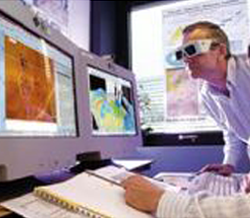
|
|
The displacement of reservoir brine by injected CO2 is highly dependent upon pore space morphology and interconnectivity, and the complex interactions between viscous and capillary forces, which change with fluid pressure and temperature as well as wettability properties of the rock. These fundamental properties of CO2 in its unique state as a supercritical fluid confined with brine within a porous medium depend upon molecular-scale phenomena that will be evaluated using molecular dynamics simulation, CO2-brine adsorption experiments, and contact angle-interfacial tension experiments, all with reservoir minerals. The results will be used to inform and parameterize pore- and continuum-scale model development, including the selection of appropriate equations of state. Pore scale models will be used to predict the influence of capillary pressure on CO2 saturation and flow, and to inform continuum scale model parameterization. The improved continuum-scale models will be used to predict field performance of CO2 injection, with the goal of more accurately predicting CO2 saturation and pressure distribution within CO2 storage reservoirs.
Pore-Scale Modeling/Upscaling of Precipitation and Flow
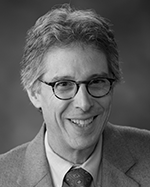
Albert J. Valocchi, PhD
University of Illinois, Urbana-Champaign
Albert J. Valocchi is the Abel Bliss Professor in the Department of Civil and Environmental Engineering at the University of Illinois at Urbana-Champaign. He has been on the faculty at Illinois since 1981. Valocchi’s research focuses upon computational modeling of pollutant fate and transport in porous media, with applications to groundwater contamination, geological sequestration of carbon dioxide, and impacts of model uncertainty on groundwater resources management. He received his B.S. in Environmental Systems Engineering from Cornell University in 1975 and did his graduate studies at Stanford University in the Department of Civil Engineering, receiving his M.S. in 1976 and Ph.D. in 1981. In 2009, he was recognized as a Fellow of the American Geophysical Union.
Molecular Dynamic Simulations: Fluid Properties and Phase Equilibria
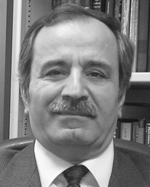
Muhammad Sahimi, PhD
University of Southern California
Muhammad Sahimi is Professor of Chemical Engineering and Materials Science and the NIOC Chair in Petroleum Engineering at the University of Southern California in Los Angeles. He received his B.S. degree from the University of Tehran, Iran in 1977, and his Ph.D. from the University of Minnesota in Minneapolis in 1984, both in chemical engineering. He has been involved with research on porous media and materials for 35 years. He has received several awards for his work, the latest of which the Honorary Membership Prize of the International Society for Porous Media (InterPore) in 2015, the highest award of the society.

Microfluidics and Wettability
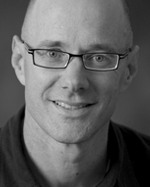
Charles J. Werth, PhD
University of Texas, Austin
Dr. Charles J. Werth is a Professor and Bettie Margaret Smith Chair of Environmental Health Engineering in the Department of Civil, Architecture, and Environmental Engineering at the University of Texas at Austin. He joined the UT faculty in August or 2014, after spending 17.5 years on the faculty at the University of Illinois at Urbana-Champaign. Dr. Werth's research and teaching focus on the fate and transport of pollutants in the environment, the development of innovative catalytic technologies for drinking water treatment, and the mitigation of environmental impacts associated with energy production and generation. Dr. Werth is a Wiley Research Fellow at the Department of Energy’s Environmental Molecular Science Laboratory, and a member of the USEPA's Science Advisory Board. Past recognition includes an Editors Choice Best Paper Award from Environmental Science and Technology (2nd in the category of Technology), recognition for the most cited paper in Journal of Contaminant Hydrology since 2008, a Humbolt Research Fellow Award, a National Science Foundation CAREER Award, and a BP Award for Innovation in Undergraduate Instruction. Dr. Werth received a B.S. in Mechanical Engineering from Texas A&M; University, an M.S. and Ph.D. in Environmental Engineering from Stanford University, and a Ph.D. minor in Chemistry from Stanford University.
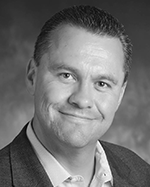
Kenneth T. Christensen, PhD
University of Notre Dame
Kenneth T. Christensen is a Professor and the College of Engineering Collegiate Chair in Fluid Mechanics at the University of Notre Dame, with a joint appointment in the Departments of Aerospace & Mechanical Engineering and Civil & Environmental Engineering & Earth Sciences. He joined the Notre Dame faculty after 10 years on the faculty at the University of Illinois at Urbana-Champaign. He directs a research group that pursues experimental studies of turbulence, geophysical flows, and microfluidics and is a WPI Principal Investigator in the Carbon Dioxide Storage Division of the International Institute for Carbon-Neutral Energy Research (I2CNER) based at Kyushu University in Fukuoka, Japan. He also served as the Associate Director of the I2CNER Satellite Center at Illinois from 2011–2014. He is a Fellow of both the American Physical Society (APS) and the American Society of Mechanical Engineers (ASME), an Associate Fellow of the American Institute of Aeronautics and Astronautics (AIAA), and serves on the Editorial Boards of Experiments in Fluids and Measurement Science and Technology. Past recognition includes the AFOSR Young Investigator Award (2006), the NSF CAREER Award (2007), the Francois Frenkiel Award for Fluid Mechanics from APS-DFD (2011) and, most recently, the Dean’s Award for Excellence in Research (2012) from the College of Engineering at Illinois. Dr. Christensen received his B.S. in Mechanical Engineering from the University of New Mexico in 1995, an M.S. in Mechanical Engineering from Caltech in 1996, and a Ph.D. in Theoretical and Applied Mechanics from the University of Illinois in 2001.

Adsorption and Absorption in Porous Media
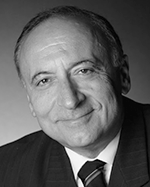
Theodore Tsotsis, PhD
University of Southern California
Professor Tsotsis received his Ph.D. in Chemical Engineering from the University of Illinois at Urbana-Champaign in 1978. He then joined the University of Southern California (USC), where he currently holds the title of the Robert E. Vivian Professor in Energy Resources in the Mork Family Department of Chemical Engineering and Materials Science. He also served as the Department’s inaugural Chair in 2005. Professor Tsotsis’ research interests are in the areas of transport, adsorption and reaction in complex porous media, reaction engineering, reactor design, and membrane separations. He is the author of over 230 technical papers, several book chapters, six U. S. and one European patent, and one book. He has also edited two Technical Meeting Proceedings volumes. He has worked on a broad array of problems, ranging from the abstract and theoretical (symmetry breaking instabilities, reaction rate oscillations) to the practical and applied (petroleum upgrading, and membrane reactors and bioreactors). Professor Tsotsis was the co-founder and a member of the executive board of USC's NSF/IGERT Center in Environmental Engineering. He is a Fellow of the AIChE.

Kristian Jessen, PhD
University of Southern California
Kristian Jessen is Associate Professor in the Mork Family Department of Chemical Engineering and Materials Science at University of Southern California. He holds B.Sc., M.Sc. and Ph.D. degrees in Chemical Engineering from the Technical University of Denmark. Dr. Jessen is the co-founder of the consulting company Tie-Line technology ApS that specializes in pressure-volume-temperature (PVT) software for design and optimization of gas injection processes. He has authored and co-authored numerous technical papers in the area of modeling and simulation of enhanced oil and gas recovery by gas injection processes. His current research activities include CO2 storage in subsurface formations and characterization and modeling of mass transfer and sorption phenomena in the context of unconventional oil and gas resources.

Site Scale Modeling
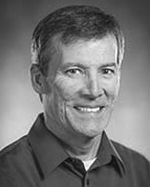
Edward Mehnert, PhD
University of Illinois,
Urbana-Champaign
Edward Mehnert, PhD, is a Senior Geohydrologist at the ISGS, Prairie Research Institute, University of Illinois at Urbana-Champaign. He has been with the ISGS since 1985. He conducts applied research on a variety of topics including groundwater-surface water interaction and basin-scale modeling of geologic carbon sequestration (GCS). For the GSCO2, he will serve as the Task Coordinator for the Multiphysics Flow and Transport Group and lead a group of modelers evaluating GCS at the field scale.
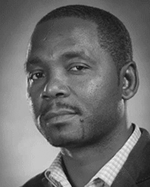
Roland T. Okwen, PhD
University of Illinois,
Urbana-Champaign
Dr. Roland T. Okwen is a reservoir engineer at the Illinois State Geological Survey (ISGS), University of Illinois at Urbana-Champaign. As a member of the ISGS, he has contributed to the Midwest Geological Sequestration Consortium’s Phase II pilot studies in the Illinois Basin and continues to assist in the development of performance curves to act as screening tools for carbon dioxide (CO2) enhanced oil recovery floods. He was the principal investigator (PI) of a project that quantified the CO2 storage efficiency of different depositional environments. Currently, he is the PI of a project titled “Brine Extraction and Treatment Strategies to Enhance Pressure Management and Control of CO2 Plumes in Deep Geologic Formations.” Before joining the ISGS, Dr. Okwen was a Postdoctoral Research Associate at the Schlumberger Cambridge Research Center in the United Kingdom. He earned his PhD in civil engineering from the University of South Florida (2009), MS in petroleum engineering from the Technical University of Denmark (2005), and BS in chemistry from the University of Buea (1997). His research interests are in geological sequestration of CO2, enhanced oil recovery, reservoir geomechanics, and unconventional resources.

Geochemical Experiments
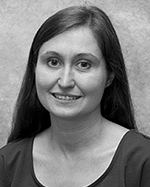
Angela Goodman, PhD
National Energy Technology Laboratory
Dr. Angela Goodman is a Physical Scientist at the National Energy Technology Laboratory (NETL) whose research interests are focused on CO2 sequestration in geologic reservoirs with respect to storage capacity and injectivity; stochastic modeling of storage resource; CO2 capture from power plants using high surface area coordination polymers, metal organic frameworks, and zeolitic imidazolate frameworks; and characterization of gas, liquid, and solid interactions using infrared spectroscopy. She is currently the Technical Portfolio Lead for Carbon Storage focusing on Resource Assessments. Her resource assessment work directly addresses the Strategic Center for Coal’s program goal of predicting storage capacity to ±30% accuracy by further developing and refining CO2 storage methods for geologic formations. A suite of methodologies are being developed and evaluated to quantitatively assess storage resource for reservoirs, including saline formations, oil and gas reservoirs, unmineable coal seams, and organic-rich shale. Dr. Goodman earned her Ph.D. in Physical Chemistry at the University of Iowa in 2000, where her research focused on the chemical balance of the atmosphere. Dr. Goodman has been a research physical scientist with NETL since 2001.